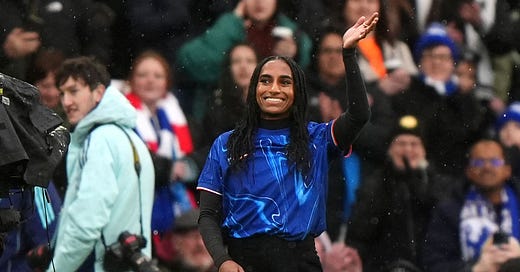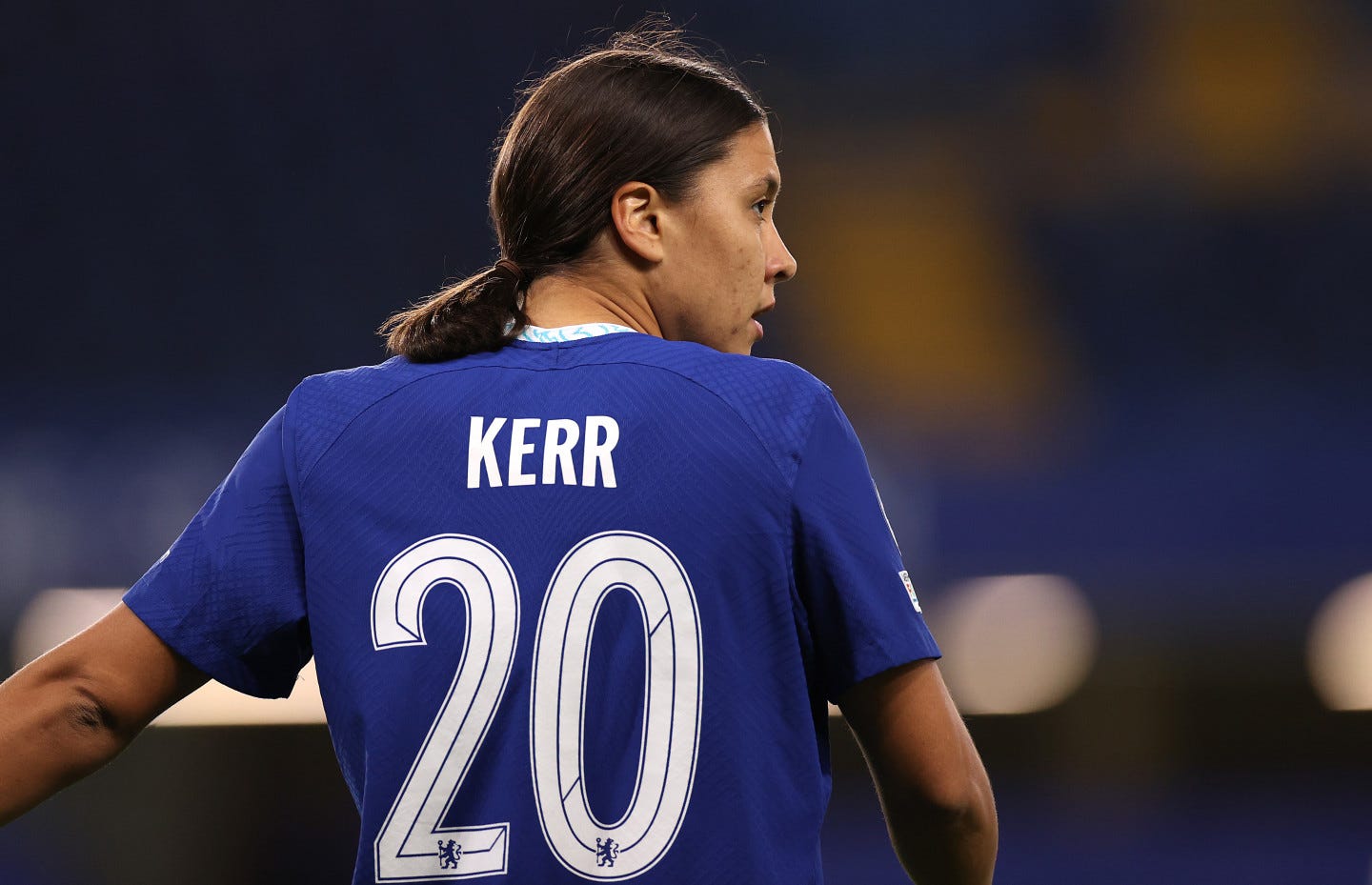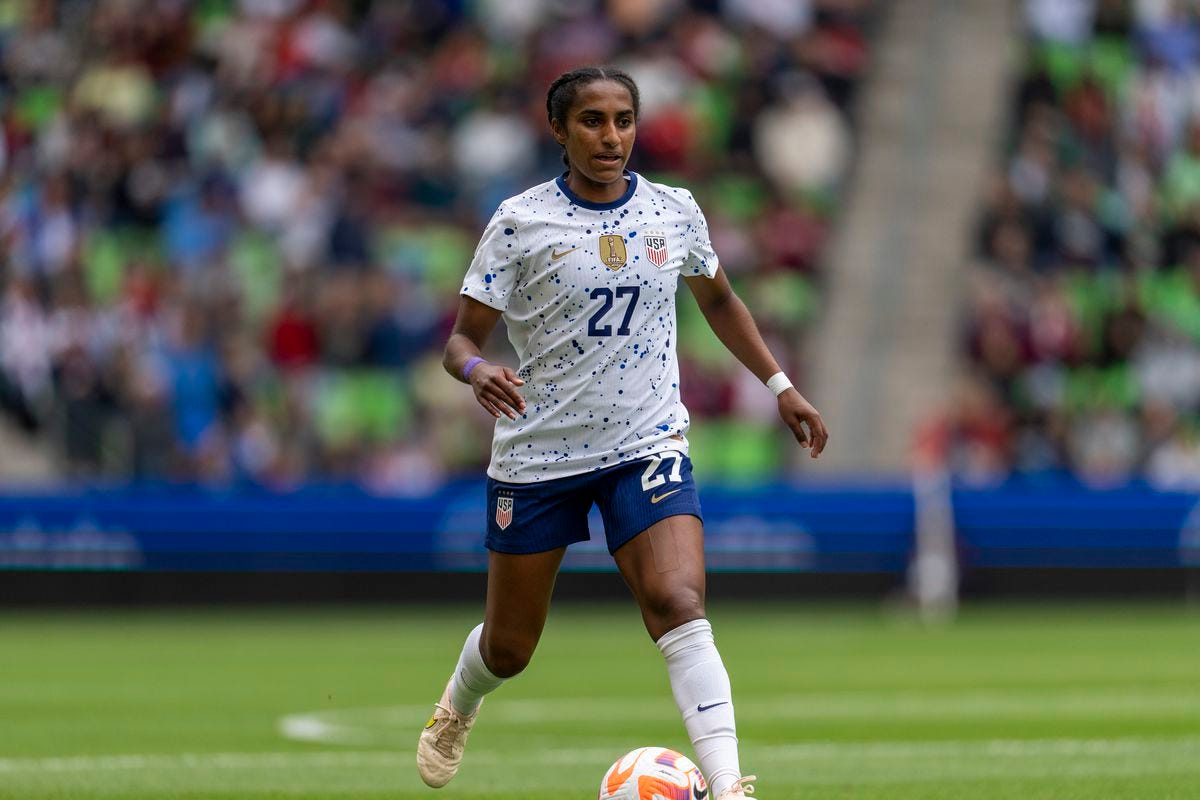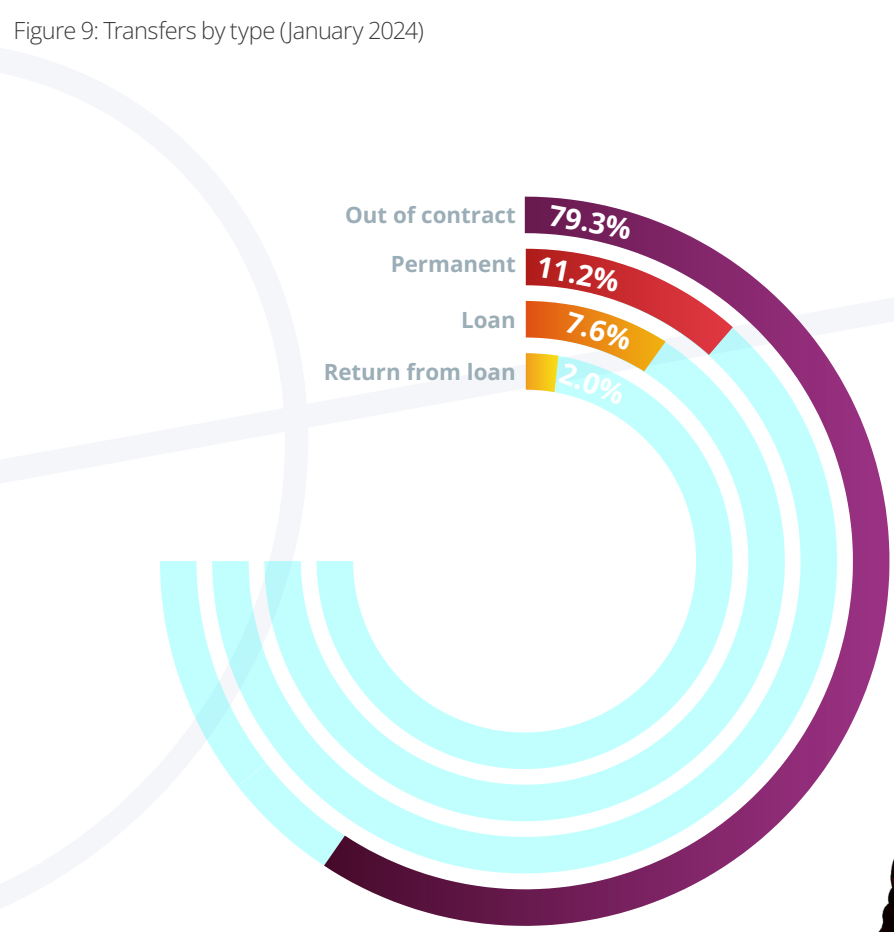Naomi Girma becomes the first million-dollar player in women's football.
Naomi Grima's record breaking fee to Chelsea reinstates the London Club as trendsetters, and provides an insight on the health of January windows.
Naomi Girma’s move from San Diego FC to Chelsea set the highest transfer fee in women’s football. The London club reportedly paid $1.1 million (£890,000) for the American defender, who was under contract with the NWSL side until 2026.
Girma’s transfer fee record comfortably beats the $860,000 (£485,000) paid by Bay FC to sign Zambian forward Racheal Kundananji from Madrid CFF in February 2024, another January window transfer.
Short-lived record fees have not always been the case in women’s football. When Rayo Vallecano paid Italian side Fiammamonza $290k (£162,000) to sign Milene Domingues in 2002, it was a price that remained unsurpassed until 2020 by Chelsea’s business of $330k (£250k), to bring in Denmark’s Pernille Harder from VfL Wolfsburg.
Harder’s move made waves for various reasons, but it was the price tag that broke an 18 year long record which ignited an untouched before conversation: When will we see a million dollar transfer in the women’s game?
Two years later, the sum was broken when Barcelona signed England's Keira Walsh from Manchester City for £350k up front and £54k in add-ons ($470k total) at the back of the Lionesses winning the home Euro’s.
A few months into 2024, the record was topped by Colombian striker Mayra Ramírez move to Chelsea followed by Kundananji.
The commonality across is: Chelsea, who have been bold in investing big, and spending unseen numbers for squad development. Perhaps, this is not new behavior from the WSL side who broke the British transfer record in 2015 to sign a young Fran Kirby from Reading for a fee reported to be between £40,000 and £60,000 ($50,000 -$75,000).
Chelsea are trendsetters of breaking transfer fee numbers: it’s become their motto.
There are not many holes in the Blues squad, but the recent season-ending anterior cruciate knee ligament injury in November to defender Kadeisha Buchanan meant the need of solid reinforcement in the back. The departure of Jess Carter last summer only exacerbated Girma’s purchase.
Unbeaten in all competitions so far and holding on to one of the best defensive records in the WSL by conceding the second-fewest goals (six), Chelsea is looking to continue that streak.
Similar to last year, Sam Kerr fell victim to the ACL epidemic in January during a training camp. Chelsea were quick to get on the market and look for a quality forward, the result being Ramírez.
Indeed, Chelsea have raised the standard of doing business and continue to be bold in putting money on the table when they are looking for strong, in demand, and needed replacements. Their approach is not interested in quick bandaids, but rather smart investment for the long term - even if that means breaking a record fee.
To win titles, there is no room to stall and wait for the next window, and Chelsea have mastered just that.
Along with heavy spendings, the London side has assured such players to sign relatively long contracts should they be involved in a transfer during the length of their contract. Both Girma and Ramírez signed a four-and-a-half-year contracts. Chelsea could make a good profit, but who can dine with them will need to have deep pockets.
Some have said the WSL side is assembling the Galacticos of women’s football, which once again asserts Chelsea’s intent. Harder was arguably the best player in 2020 when the Blues broke the record for her, and Girma's value is close to unmatched.
The front office and recruitment of Chelsea will be, and certainly is, the kryptonite of the other European bigs.
According to ESPN, one of the reasons Arsenal backed out of a deal was because of Grima’s expected wage demands. Additionally, the club were also unwilling to break the world record for the transfer fee either. The in demand defender was also a key transfer target for the French club Lyon, who reportedly made a $1 million bid, and eventually lost to the London club.
Girma not only saw that Chelsea were willing to be meet her demands, she was convinced by the ambitious environment shown.
"Look, she's the best defender I've ever seen," said former Chelsea head coach and current USWNT manager Emma Hayes when speaking about Girma at the Paris Olympics. The centre-back was the No 1 pick in the first round of the 2022 NWSL draft after a stellar time captaining Stanford University’s team in the college system - it is no surprise to her reach such heights at a young age.
The American’s spatial awareness makes her a great reader of the game, and a tough last-man to beat. She’s not beaten easily in physical battles, and seems to have the perfect amount of relentless and collected under pressure.
Consequently, the January window has slowly built a reputation for ‘time to make strong moves’ as clubs have a limited amount of time (33 full days), to sharpen up their squad one final time for the season. Some teams enter the market dealing with injured bodies, others are working with a different manager than they started the season with, and most are looking to improve what they already have should the funds be available.
According to a FIFA report, the majority of transfers during the 2024 January transfer window - 79.3 per cent - were associated with out-of-contract players. Yet, for the first time in any January transfer window, more than 10 per cent of the transfers were permanent transfers with a transfer agreement between the two clubs.
In simpler terms, more money is being spent in January than ever before.
Women’s clubs spent $2.1m (£1.7m) on transfer fees in January 2024, a record figure and an increase of 150 per cent from the same window a year earlier. The Janaury window is pushing the ceiling on transfers, changing the dynamics of how player assets are being assessed.
2023 proved to be a big jump, with a 50 per cent increase in the number of transfers that included a fee in, and a 31.3 per cent shoot up in the January window. Despite this, 92 per cent of women’s transfers did not involve a fee that year, according to FIFA’s annual global transfers report.
Free transfers are common in the women’s game because, traditionally, players’ contracts run short and have a length of a year or 18 months, per various FIFA reports - a slowly changing trend. Clubs would rather get the player on a free in six months time, than to pay a transfer fee at the start of the year.
With a new transfer fee recorded, it's becoming abundantly clear that players are on the way to being their clubs’ most valuable assets. As their worth goes up, so do the sums other clubs are willing to pay. There is no denying this makes the gap between clubs larger depending on the resources they are working with, but this can operate as a motivator.
Investors, club owners and sporting directors are put on alert watching the market, and the standards be driven upwards. Spending heavy bags on players alongside investing in academy products will play a huge role in the health of clubs moving forward, much more than before. Given the trend of the game, homegrown talent is a valuable stock that will continue to shoot up.
Less than 24 months ago, we were asking ourself how far is the sport from hitting a $1.0 million transfer. Today, we celebrate Girma’s story as a defender, born in California to Ethiopian-immigrant parents that has made history. Next, we chatter to see who will beat this number next.









Such an interesting article!! Can’t wait to read more of exciting content!!